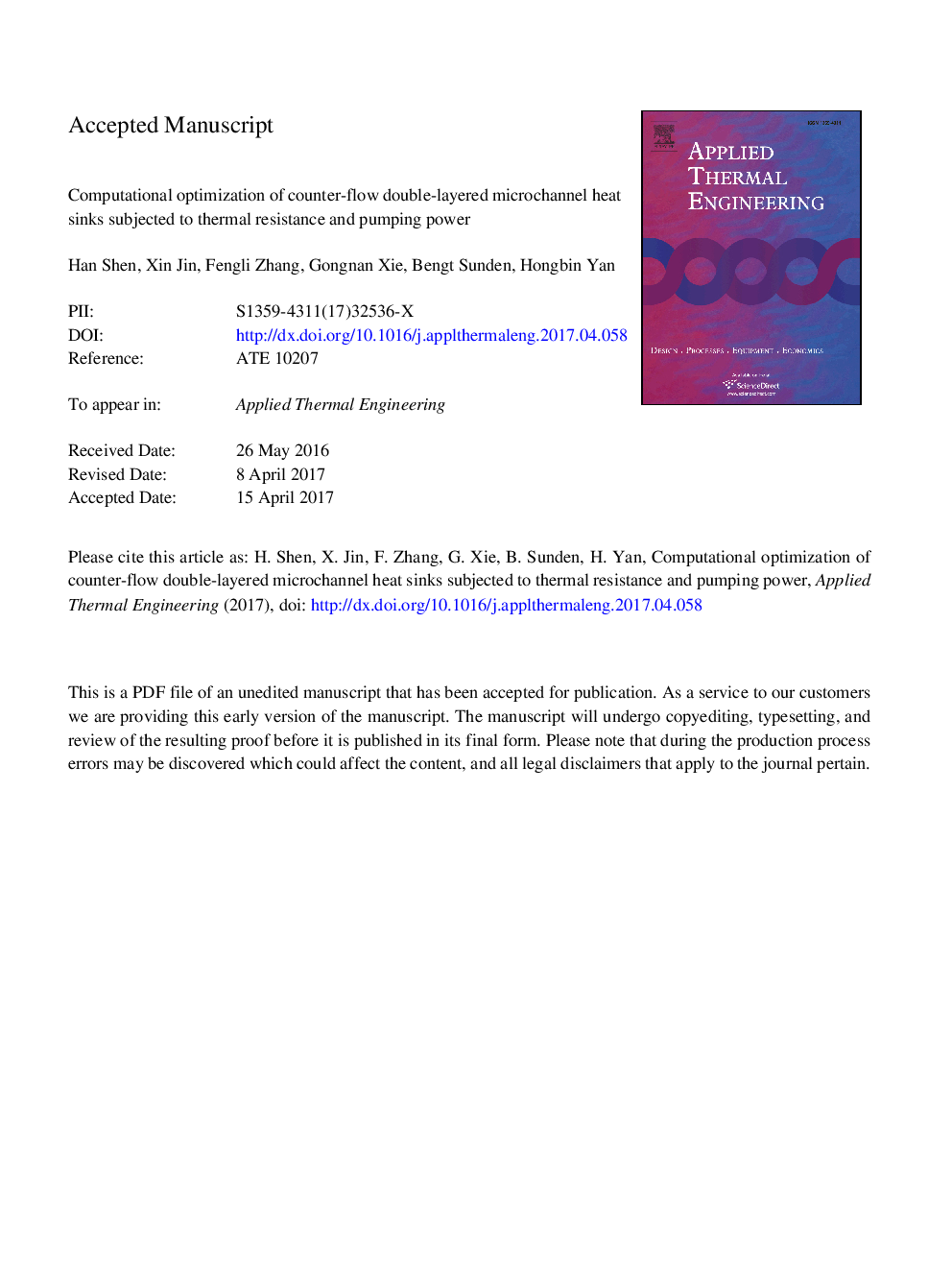| Article ID | Journal | Published Year | Pages | File Type |
|---|---|---|---|---|
| 4991073 | Applied Thermal Engineering | 2017 | 43 Pages |
Abstract
Various microchannel heat sinks are widely used to cool electronic chips, but they are often designed to be single-layer channels. To a certain extent, single-layered microchannel heat sinks can solve the problem of high heat flux. However, due to the limitation of pumping power, only a small coolant flow rate can be adopted; and the temperature of the heated plate is non-uniform. In this paper, the structure of double-layered countercurrent microchannel heat sinks is designed. The NSGA-II optimization algorithm is used to optimize the height ratio of the two layers and the length of the upper layer. The corresponding Pareto frontier is obtained. After validation of the optimization Pareto front, some validated characteristic cases are investigated numerically. The results of the optimization show that despite a conflict between reducing the thermal resistance and lowering the pumping power, there is an appropriate structure of the double-layered countercurrent microchannel heat sink optimized by the NSGA-II optimization algorithm. For the selected cases, Case 4 has the best thermal performance, because Case 4 not only has a smaller pumping power than Case 0, but also has a smaller thermal resistance than Case 0. Therefore, it is indicated that better thermal performance of microchannel heat sinks can be achieved through the optimization algorithm.
Related Topics
Physical Sciences and Engineering
Chemical Engineering
Fluid Flow and Transfer Processes
Authors
Han Shen, Xin Jin, Fengli Zhang, Gongnan Xie, Bengt Sunden, Hongbin Yan,
